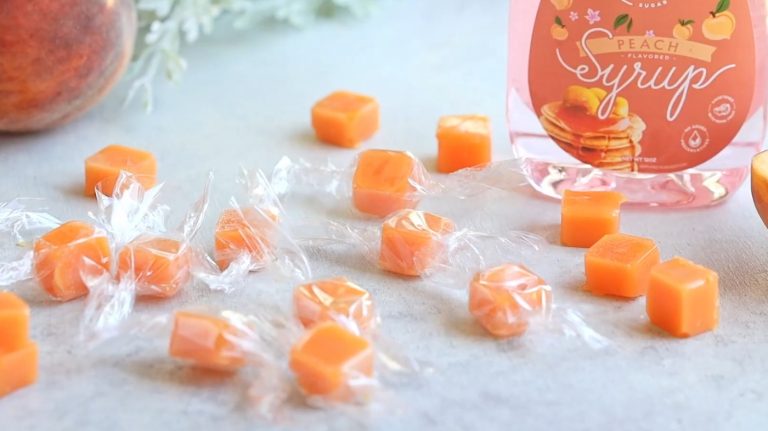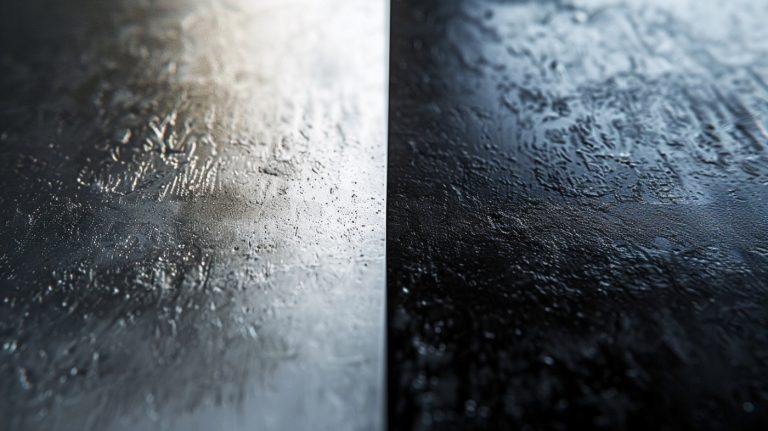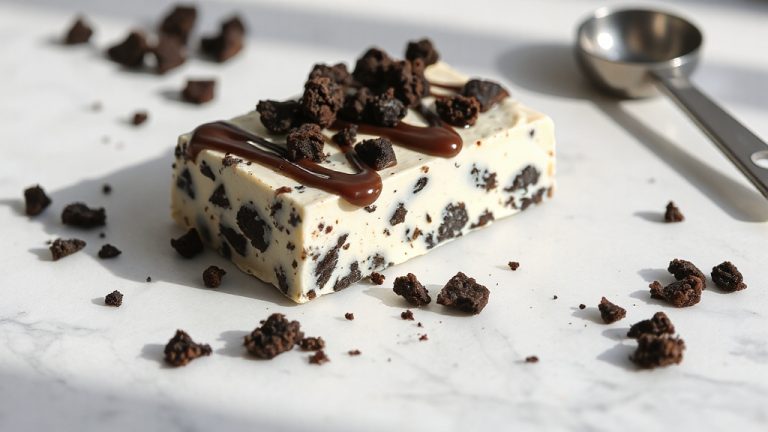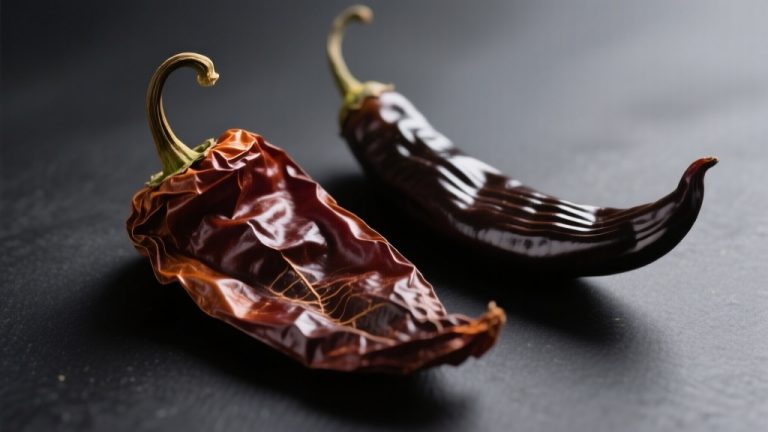Grouper Cheeks Recipe: How to Cook Perfectly Tender Fish?
Choose firm, fresh grouper cheeks and pat them dry. Season with salt, pepper, garlic, and a splash of citrus or your favorite spices. Marinate briefly, then cook quickly: grill, sear, fry, or bake, aiming for a crispy outside and tender inside.
Finish with fresh herbs and serve alongside vibrant sides like blistered peppers or turmeric corn. Follow these steps to master the perfect balance of texture and flavor. Then explore techniques to elevate your dish further.
Key Takeaways
- Select firm, translucent grouper cheeks weighing 1-3 ounces, rinsed and patted dry for even cooking and optimal freshness.
- Season with salt, pepper, garlic, citrus zest, and spices like smoked paprika; marinate 30 minutes in the refrigerator.
- Cook by frying for crispiness, grilling for smoky flavor, searing with butter, or baking to retain moisture.
- Enhance flavor with fresh herbs, Cajun seasoning, lemon juice, and garnish with blistered shishito peppers or toasted breadcrumbs.
- Achieve crispy texture by patting dry, triple-coating with flour, egg, and breadcrumbs, frying at 350°F, and draining on a wire rack.
Perfecting Grouper Cheeks: A Quick Recipe Reference
| Ingredients / Tools | Steps / Actions |
|---|---|
| Fresh grouper cheeks (1–3 oz each) | Pat dry the cheeks thoroughly to remove excess moisture. |
| Salt & black pepper | Season both sides evenly for balanced flavor. |
| Garlic (minced) | Add to enhance the natural sweetness of the fish. |
| Citrus juice or zest | Marinate for 30 minutes to tenderize and infuse brightness. |
| Smoked paprika or cumin (optional) | Incorporate for deeper flavor and color. |
| Olive oil or butter | Lightly coat or use for searing to achieve a golden crust. |
| Fresh herbs (cilantro, parsley, or basil) | Sprinkle just before serving for aroma and freshness. |
| Breadcrumbs, flour, and egg (optional) | For a crispy finish, triple-coat before frying. |
| Cooking method (grill, fry, sear, or bake) | Cook quickly to retain moisture and tenderness; avoid overcooking. |
| Thermometer and wire rack | Maintain oil temperature at 350°F and drain to preserve crispiness. |
| Lemon wedges or herb oil | Finish with a drizzle of fresh citrus or flavored oil before serving. |
| Serving suggestions | Pair with blistered peppers, turmeric corn, or a light salad. |
Selecting and Preparing Grouper Cheeks
Although grouper cheeks are a small and often overlooked cut, selecting high-quality pieces is essential for achieving the best texture and flavor in your dish.
Choose cheeks that are firm, translucent, and free from discoloration or excessive moisture. They should emit a clean, mild ocean scent, indicating freshness.
Select firm, translucent grouper cheeks with no discoloration and a fresh, mild ocean aroma for best quality.
Opt for pieces about 1 to 3 ounces for even cooking, and decide between skin-on or skinless based on your recipe.
After sourcing, rinse the cheeks under cold water and pat them dry thoroughly.
Trim any connective tissue or membranes to enhance texture and presentation, handling the cheeks gently to preserve their delicate flesh.
For the best taste, it is recommended to enjoy grouper cheeks immediately for optimal freshness.
Allow them to reach room temperature before cooking to ensure even heat distribution and superior results.
Seasoning and Marinating Techniques
When seasoning and marinating grouper cheeks, you want to balance enhancing their natural flavor with adding complementary accents that deepen taste and texture.
Start by patting the cheeks dry, then lightly spray with olive oil to help seasonings adhere. Use salt and freshly ground black pepper as a base, and add garlic, citrus zest or juice, and spices like smoked paprika or cumin for depth. Grouper cheeks are prized for their tender texture and sweet flavor, making subtle seasoning ideal.
Marinate in a shallow dish in the refrigerator for about 30 minutes to tenderize without over-softening. Before cooking, shake off excess marinade to ensure proper searing.
Fresh herbs, such as cilantro or parsley, can be added just before serving to preserve brightness. Avoid salting too early to maintain the delicate texture and always season both sides evenly for balanced flavor.
Cooking Methods for Perfect Grouper Cheeks
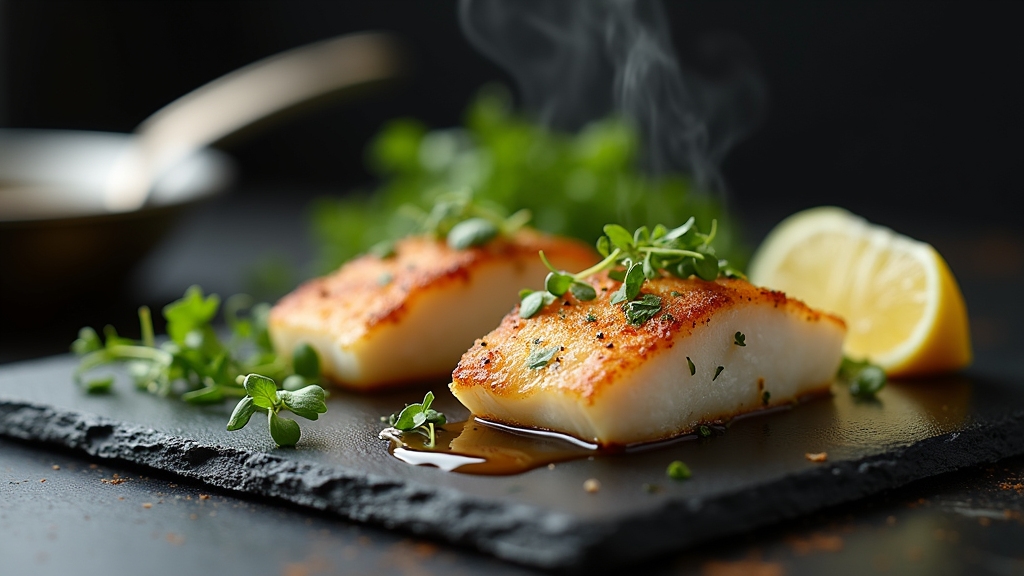
To cook grouper cheeks perfectly, you need to choose a method that highlights their delicate texture and flavor while maintaining moisture.
Whether frying, grilling, searing, or baking, each technique offers unique benefits to enhance this prized cut.
When preparing your grouper cheeks, consider these key points:
Frying yields a crispy exterior with a tender, flaky interior, perfect for a satisfying crunch.
Grilling imparts a smoky aroma and a beautiful char, requiring high heat to avoid drying out.
Searing quickly forms a golden crust, often finished with butter for richness. For example, Chef Jared Gross recommends seasoning the cheeks with salt and pepper, then searing them in hot oil and basting with butter to enhance flavor and texture, accompanied by blistered shishito peppers for added complexity seared grouper cheeks preparation.
Baking retains moisture while allowing gentle infusion of herbs and citrus for subtle flavor.
Mastering these methods ensures perfectly cooked grouper cheeks every time, showcasing their natural sweetness and texture.
Flavor Enhancements and Serving Ideas
Enhancing the natural sweetness of grouper cheeks depends largely on your choice of herbs, spices, and complementary ingredients. Use fresh basil, cilantro, or chives to brighten flavors, or apply Cajun or jerk seasoning for a bold, spicy profile.
Fresh herbs like basil, cilantro, or chives enhance grouper cheeks, while Cajun or jerk spices add bold, spicy notes.
Marinades with olive oil and lemon juice keep cheeks moist while balancing richness. Because grouper cheeks have a mild flavor, they pair well with both subtle and bold seasoning choices.
For texture and visual appeal, garnish with blistered shishito peppers, pickled onions, or toasted breadcrumbs.
Serve with sides like creamed corn infused with turmeric or a simple green salad to add freshness and balance.
Finish dishes by drizzling high-quality olive oil or fresh herb oil, and consider a brown butter baste for added depth.
These thoughtful enhancements elevate the delicate flavor and presentation of grouper cheeks without overwhelming them.
Tips for Achieving Crispy and Tender Results
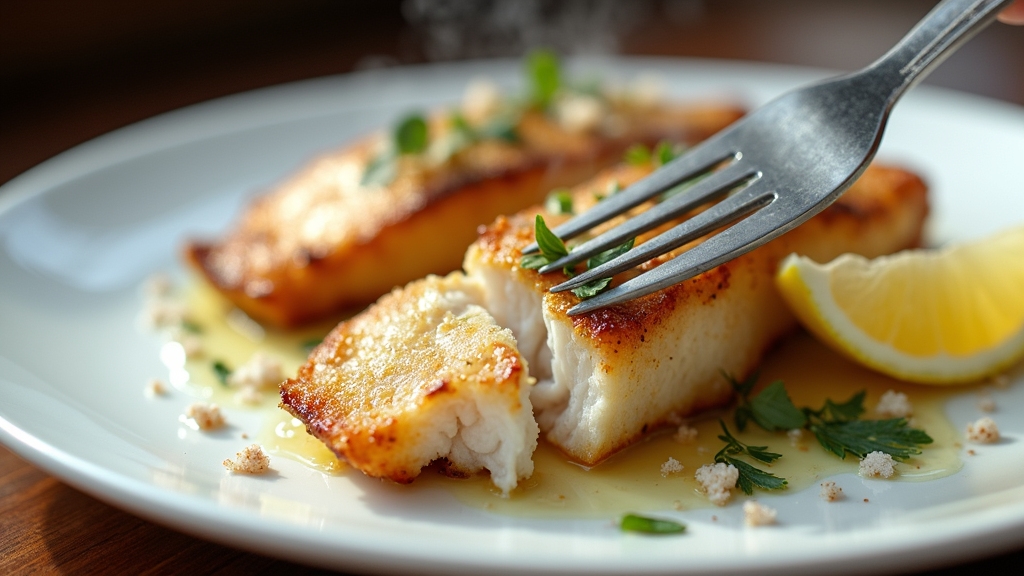
Perfecting the texture of grouper cheeks means balancing crispiness with tenderness. To achieve this, start by patting the cheeks dry to avoid sogginess and oil splattering. Ensure your fish pieces are no thicker than ½ inch to promote even cooking and a consistent texture throughout.
Use a triple-coating of flour, egg wash, and breadcrumbs; season each layer for enhanced flavor and texture. Fry in batches in 350°F oil, flipping only once, to ensure even browning without overcooking. Maintaining consistent heat with a thermometer helps preserve the optimal cooking temperature for best results.
Remove promptly and drain on a wire rack to maintain crispiness.
Key tips to keep in mind:
Preheat oil and use a thermometer for consistent heat. Avoid overcrowding to maintain oil temperature. Use a cast-iron skillet for even searing.
Serve immediately with a light lemon drizzle for brightness without sogginess. These steps guarantee crispy, tender grouper cheeks every time.
Frequently Asked Questions
Can Grouper Cheeks Be Frozen Before Cooking?
Yes, you can freeze grouper cheeks before cooking.
To preserve freshness, wash and clean them thoroughly. Then use vacuum sealing, ice glazing, or sealed bags with water to prevent freezer burn.
Freeze them promptly and store for up to three months.
When ready, you can cook them straight from frozen or thaw in the refrigerator overnight.
This method helps maintain quality and flavor until you’re prepared to cook.
How Long Do Cooked Grouper Cheeks Stay Fresh Refrigerated?
You should keep cooked grouper cheeks refrigerated for no more than 3 to 4 days to guarantee freshness and safety.
Make sure they cool completely within 2 hours before storing in airtight containers at temperatures below 40°F (4°C).
Label the containers with the cooking date to track freshness easily.
If you don’t plan to eat them within this timeframe, freezing is your best option to extend their shelf life safely.
Are Grouper Cheeks Sustainable and Environmentally Friendly to Eat?
You should know that about 25% of all grouper species are threatened due to overfishing, so eating grouper cheeks isn’t always sustainable or environmentally friendly.
Since many grouper populations, like the gag grouper, face overfishing and slow recovery, choosing grouper cheeks from well-managed, certified fisheries is vital.
Supporting sustainable practices helps protect these important reef predators and their habitats, ensuring grouper populations remain healthy for the future.
What Are Common Allergens Associated With Grouper Cheeks Recipes?
You should be aware that grouper cheeks contain parvalbumin, the major allergenic protein common to finned fish. If you’re allergic to finned fish like bass or snapper, you might react to grouper too.
Additionally, cross-contamination risks arise from fish-derived ingredients like Worcestershire sauce or fish gelatin often used in recipes.
Fish allergens remain potent after cooking, so even cooked grouper cheeks can trigger reactions ranging from mild hives to severe anaphylaxis.
Can Grouper Cheeks Be Substituted With Other Fish Cheeks?
Yes, you can substitute grouper cheeks with other fish cheeks like halibut, cod, ling, or walleye. Each offers a similar delicate texture and mild flavor but varies slightly.
Halibut cheeks are richer, cod cheeks are firmer, and ling cheeks have a scallop-like texture. Choose based on availability and desired cooking methods.
Just verify freshness and source responsibly to maintain quality and sustainability when swapping ingredients.
Try This Recipe Tonight and Taste the Difference
Think of grouper cheeks as hidden gems in the ocean’s treasure chest. Delicate, flavorful, and worth the careful journey from sea to plate.
By selecting quality cheeks, seasoning thoughtfully, and cooking with attention, you reveal their true potential. Like a master jeweler polishing a rare stone, your technique brings out the brilliance of each bite.
With patience and skill, you’ll transform simple ingredients into a culinary masterpiece that’s both crispy and tender.


